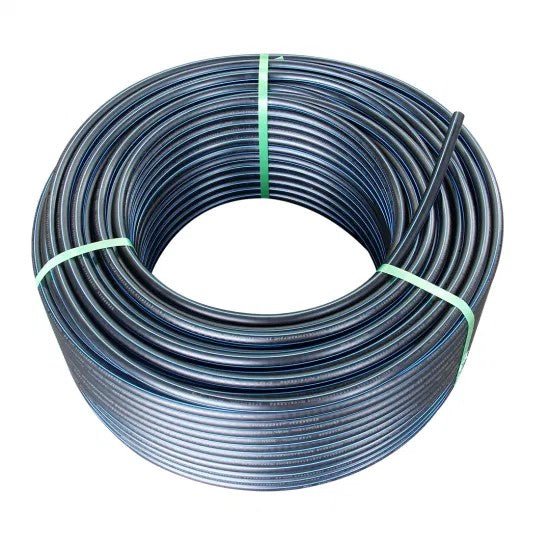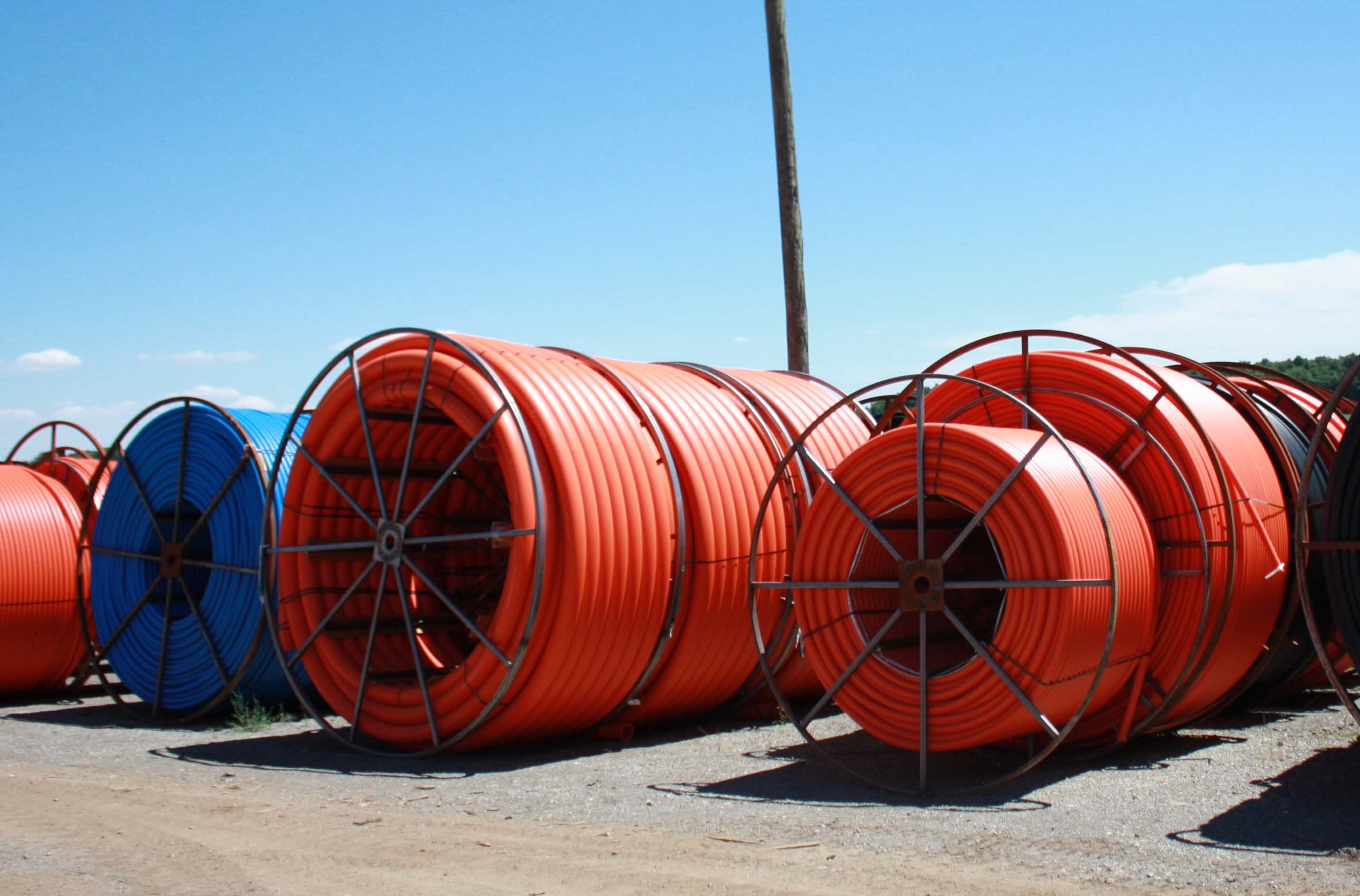Why Builders Prefer hdpe pipe in stock Midland TX for Reliable Supply
Wiki Article
The Necessary Actions for Effective Setup of HDPE Pipeline in Your Following Task
Effective setup of HDPE pipeline needs careful preparation and execution. Secret actions include examining job needs, preparing the site, and choosing correct joining methods. Each phase plays an essential function in guaranteeing the honesty and efficiency of the pipeline. Comprehending these essential steps can greatly affect the overall success of the project - Midland TX HDPE Pipe Fittings in Stock. The subtleties of each step might hold the key to getting rid of common challenges faced during setup.Comprehending the Conveniences of HDPE Pipe
High-density polyethylene (HDPE) pipeline uses many advantages that make it a favored choice for numerous applications. Its high resistance to corrosion and chemicals warranties resilience in demanding environments, considerably extending the life-span of installments. In addition, HDPE's flexibility enables easier installment, specifically in tough surfaces, as it can flex without breaking. The light-weight nature of HDPE pipe streamlines transport and handling, minimizing labor prices throughout installation.HDPE pipe is known for its low rubbing coefficient, which enhances liquid circulation and reduces power consumption. Its seamless building minimizes the danger of leakages, adding to better source management and environmental management. Furthermore, HDPE is recyclable, lining up with lasting practices and minimizing ecological impact. On the whole, the combination of stamina, flexibility, and eco-friendliness makes HDPE pipeline a superior selection for a vast array of jobs, from water circulation to industrial applications.
Preparation Your HDPE Pipeline Installation
When planning a setup of HDPE pipe, mindful factor to consider of numerous key variables is vital to secure a successful project. First, job supervisors must examine the particular needs of the pipeline, consisting of the intended use, flow rates, and ecological conditions. Comprehending these parameters will assist the selection of appropriate pipe dimensions and product quality.Next off, timelines should be established, factoring in purchase schedules and any kind of potential hold-ups. Control with neighborhood authorities for authorizations and regulatory conformity is additionally necessary. Additionally, a thorough budget plan needs to be prepared, encompassing all expenses connected with products, labor, and machinery.
Lastly, it is essential to engage a qualified team experienced in HDPE pipe setup. Their know-how will certainly help mitigate dangers, warranty adherence to market requirements, and inevitably contribute to the job's success. Detailed preparation prepares for a smooth installation procedure and resilient performance of the HDPE piping system.
Preparing the Site for Installment
Appropriate website preparation is crucial for the successful installation of HDPE pipe. Before setup begins, the website should be thoroughly assessed to ensure it fulfills all needed requirements. This includes surveying the ground for existing frameworks, utilities, and prospective hazards that might hinder the setup process.

Correct elevation and positioning must be established to maintain a regular gradient for drain purposes. Proper drain around the installment website is likewise vital to stop water buildup, which can cause problems down the line.
Techniques for Joining HDPE Pipes
Accomplishing a reputable link in between HDPE pipelines is important for guaranteeing the honesty and longevity of the setup. Numerous techniques exist for joining these pipes, each matched for various task requirements. Fusion welding is just one of the most common techniques, utilizing warmth to bond the pipe finishes with each other, creating a smooth and long lasting connection. This technique can be additional classified into outlet combination and butt fusion, depending upon the pipeline arrangements.Mechanical fittings are another alternative, using clamps and threaded connectors to sign up with sections of HDPE pipe. While typically faster to install, they may require added maintenance over time. Electrofusion is a specific method that entails using electric present to warmth and fuse the pipes through specially designed installations, ensuring a solid bond. Selecting the ideal signing up with strategy is important, as it straight impacts the general performance and integrity of the HDPE piping system in the intended application.
Testing and Assessment of Installed Piping
The testing and assessment of installed HDPE pipelines are essential to guaranteeing their functionality and long life. This procedure encompasses visual inspection methods, pressure testing approaches, and leak detection treatments to recognize potential concerns. By using these methods, specialists can confirm the stability of the installation before it is put right into use.Aesthetic Inspection Techniques
Using efficient aesthetic evaluation methods is crucial for guaranteeing the honesty of mounted HDPE pipes. Inspectors should methodically analyze all visible areas of the pipe to recognize any indicators of damage, misalignment, or inappropriate setup. Trick indications to evaluate consist of joint integrity, surface area irregularities, and links. Examiners might utilize tools such as multiplying glasses or cams to improve presence and detail. It is necessary to inspect for signs of ecological tension, such as distorting or extreme flexing, which could endanger efficiency. Consistent paperwork of searchings for permits for tracking changes over time and aids overview necessary repair services. By adhering to recognized aesthetic assessment protocols, task groups can notably minimize the threat of future failings and assure lasting dependability of the piping system.Pressure Checking Approaches
Aesthetic evaluation works as a preliminary procedure, yet it is not adequate by itself to guarantee the efficiency of mounted HDPE pipes. Pressure screening techniques are necessary for ensuring the honesty of these systems. Normally, hydrostatic screening is used, where the pipelines are loaded with water and based on stress degrees above the designated operating pressure. This approach helps determine weak points or possible leaks. Pneumatically-driven testing can also be utilized, although it carries better dangers due to the compressibility of air. No matter the approach picked, sticking to market requirements and security methods is vital. After carrying out stress examinations, comprehensive documents is needed to validate the outcomes and confirm that the setup satisfies all functional requirements prior to continuing to the next stage of the job.
Drip Detection Treatments
Just how can one ensure that mounted HDPE pipes are complimentary from leakages? Reliable leakage get more info detection procedures are important to protect the honesty of the system. At first, aesthetic examinations need to be done, trying to find indications of water buildup or dirt disintegration around pipeline joints. Following this, pressure testing can validate the system's strength. An usual technique is the hydrostatic examination, where water is introduced under stress, keeping track of for drops that show potential leaks. Furthermore, progressed innovations, such as acoustic sensors or infrared thermography, can detect leaks that may not show up. Regular monitoring and maintenance further add to the longevity of HDPE pipelines, ensuring they remain leak-free throughout their functional lifespan. Proper paperwork of these treatments is important for compliance and future recommendation.Maintenance Tips for Long-Term Performance
To guarantee the durability of HDPE pipes, establishing a routine assessment schedule is vital. This aggressive approach permits the very early discovery of potential problems, reducing costly repair services. In addition, implementing appropriate cleansing strategies will certainly help maintain peak performance and stop build-up that can influence capability.Regular Inspection Schedule
Although HDPE pipes are understood for their longevity and resistance to corrosion, establishing a regular assessment routine is essential for ensuring their long-term efficiency. Routine assessments aid recognize possible concerns such as leakages, joint honesty, and ecological effects that might impact the pipeline's functionality. It is suggested that evaluations occur a minimum of biannually, or a lot more frequently in environments with extreme problems. American Plastics HDPE Pipe Manufacturing. During these evaluations, visual checks ought to be carried out to identify indicators of wear or damages. In addition, utilizing technology such as ultrasonic screening can give more insights into the pipeline's condition. By applying a structured inspection routine, project managers can proactively deal with issues, thus extending the lifespan of HDPE pipelines and maintaining system effectivenessProper Cleaning Techniques
Appropriate cleansing techniques play an essential function in keeping the long-term performance of HDPE pipelines. Routine cleansing prevents the accumulation of debris, debris, and biofilm, which can result in clogs and minimized flow efficiency. Operators should use approaches such as high-pressure water jetting or foam cleaning to effectively remove impurities without damaging the pipeline surface. It is important to prevent making use of harsh chemicals that may weaken HDPE product. Furthermore, scheduled upkeep checks must consist of aesthetic inspections for any signs of wear or damage. Effectively trained workers should perform these cleaning processes, making certain conformity with safety and security and environmental regulations. By applying these practices, the lifespan of HDPE pipelines can be significantly prolonged, making sure excellent efficiency throughout their functional life.Frequently Asked Inquiries
What Are the Ecological Impacts of HDPE Pipeline Production?
The environmental effects of HDPE pipe production include greenhouse gas exhausts, power usage throughout production, potential plastic air pollution, and challenges in recycling. HDPE's durability and resistance to deterioration can alleviate some ecological problems.How Does HDPE Pipeline Compare to Other Materials?

What Tools Are Required for HDPE Pipe Setup?
Crucial tools for HDPE pipeline installation consist of a combination device, pipeline cutters, shovels, determining tape, and security gear. Appropriate devices warranties effective, risk-free handling and installment, adding to the project's general success and stability.Exist Any Particular Regulations for HDPE Pipeline Installation?
Certain policies for HDPE pipeline installment vary by region, commonly controlled by regional, state, or government codes. Compliance with these laws assurances safety and security, environmental management, and capability, making adherence vital for successful task results.Can HDPE Pipeline Be Recycled After Usage?
Yes, HDPE pipes can be reused after usage. Their polycarbonate nature allows for reprocessing, making them appropriate for reusing right into brand-new items. This sustainability facet contributes to ecological conservation and advertises circular economic climate techniques in building and construction.Report this wiki page